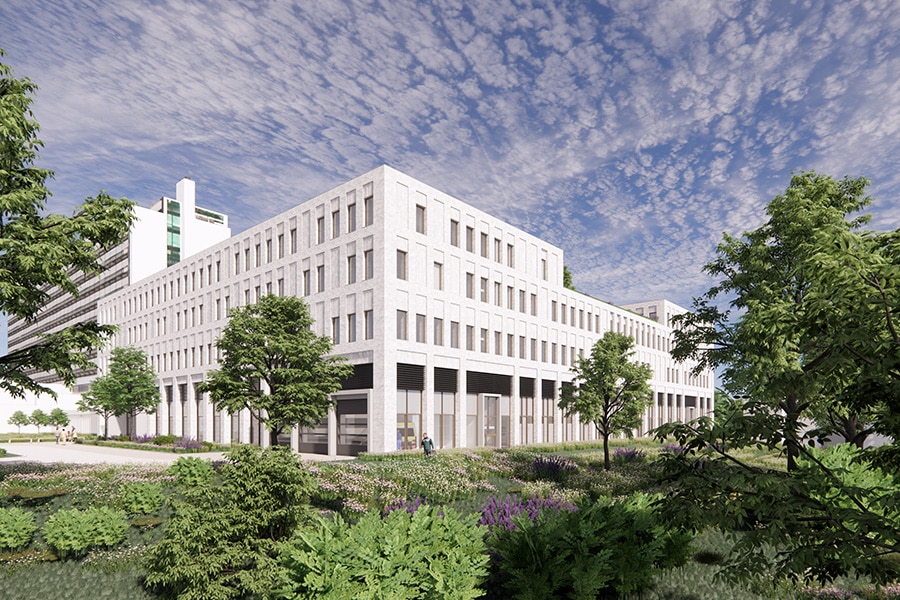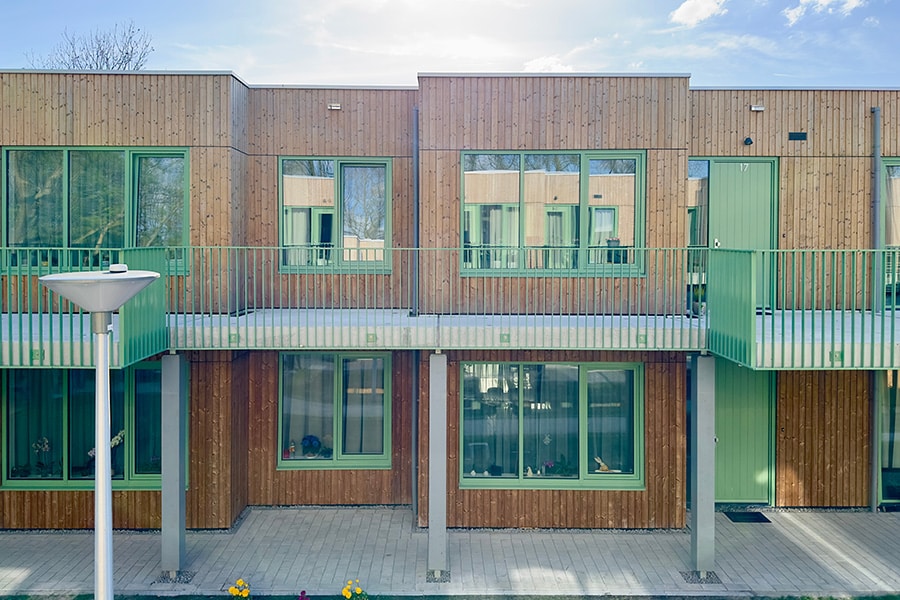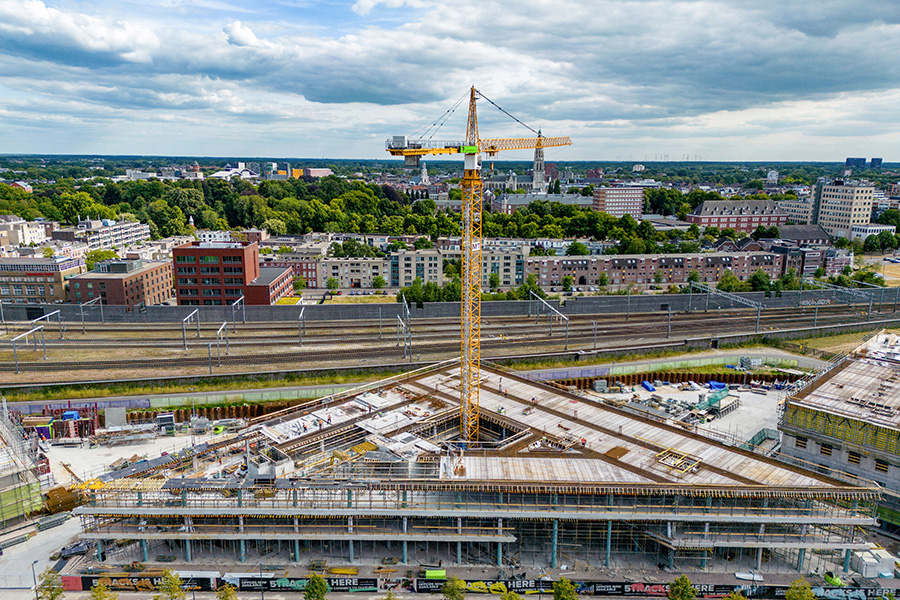
Innovative and sustainable wooden facade elements ready for installation
"We were involved at an early stage by VORM and BESIX," says Hans Bakker, account manager at VIANEN. "In the preliminary phase, as co-maker of the building consortium and in close cooperation with architects BIG and BARCODE Architects and suppliers Sorba (aluminum cladding) and Facédo (aluminum window frames), we determined the most efficient detailing for this project. This expressly took into account the building physics requirements, such as high fire resistance, sound insulation and thermal insulation, as well as easy assembly."
The wooden façade elements are worked out in a BIM model, which includes such things as wind pressure, stiffness and other forces in addition to the correct proportions and frame recesses. "From the BIM model, among other things, production is controlled," said Bakker. "In total, we produce 787 pieces/10,415 m² of prefab wooden façade elements. The insides of the elements consist of a gypsum fiberboard, which is applied to high-strength (C24) pine post and battening. Each element is filled with high-quality glass wool insulation, after which it is closed with a 9 mm thick fiber cement exterior board. This outer sheet has a high fire resistance and is fully waterproof taped. All façade elements for Sluishuis are constructed as a box structure. This creates very rigid and dimensionally stable elements with a very high load-bearing capacity, into which frames with large dimensions can be built. In addition, we apply special anchors that allow the façade elements to move with the deformations of the building."
The aluminum window frames are already built into the elements at VIANEN's factory in Montfoort. "A total of 1,063 window frames are involved, which are unloaded by us from the trucks and prepared for day production at the wooden façade elements. This allows Facédo not only to work very efficiently, but also to benefit from a clean, dry and modern equipped assembly environment," says Bakker. "In addition, all elements are very easily accessible all around, which guarantees perfect air and water sealing."
From the factory, all façade elements are transported to the construction site ready-to-use, just-in-time and with their own means of transport. "All elements are delivered on large element trestles and brought to the correct height by the contractor's cranes, where they can be assembled directly into the shell. This allows the façade to be made wind and watertight at a rapid pace." In early 2021, the first elements will be delivered, after which the aluminum facade cladding will be fixed on site.



